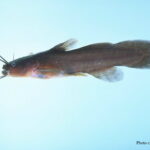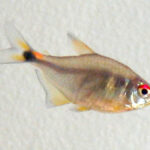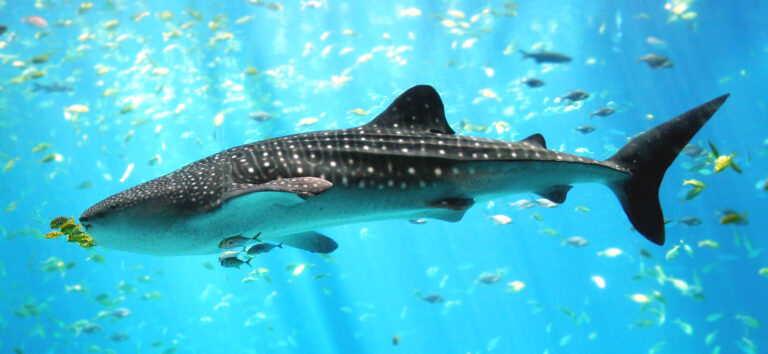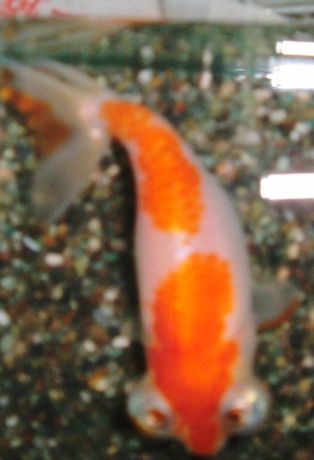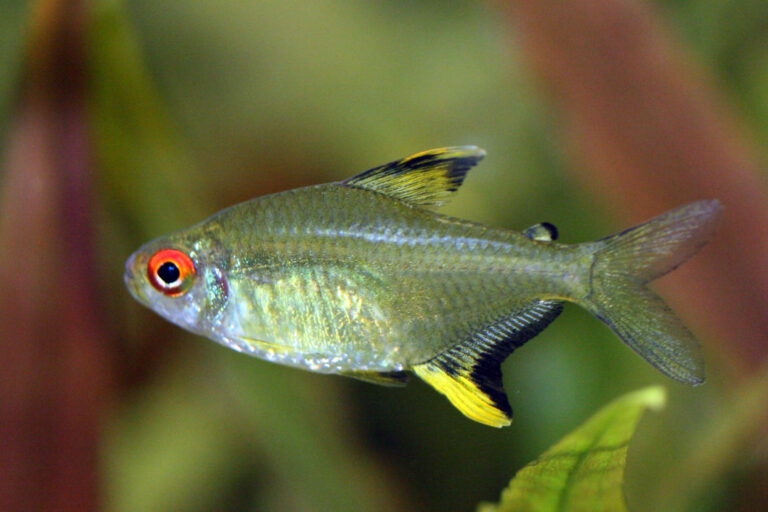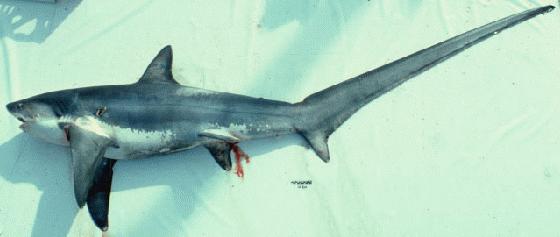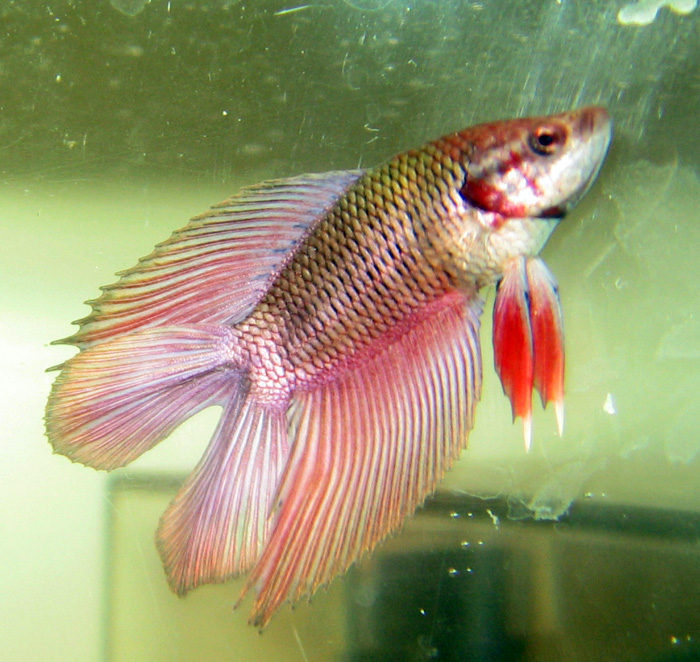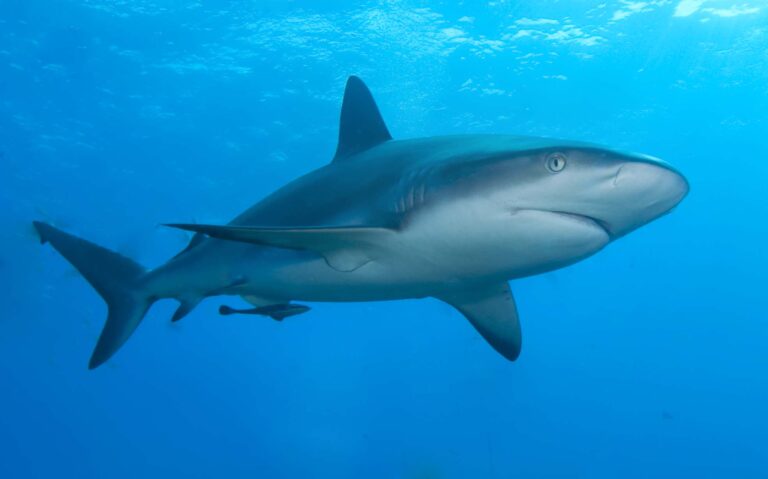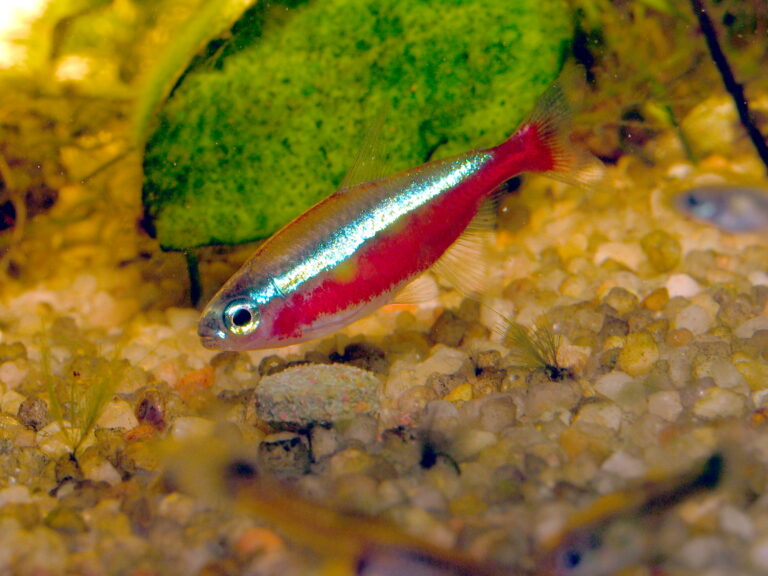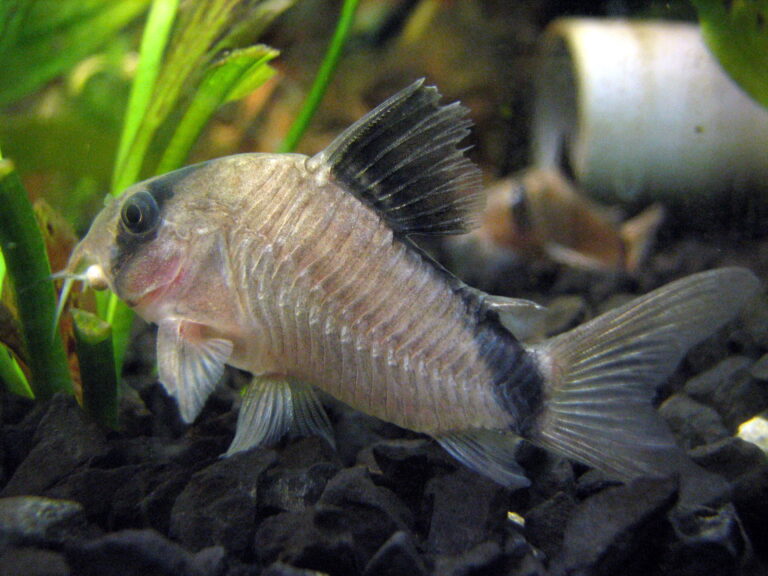Swordtail Fish
By Ryan Maron | Last Modified: June 5, 2025
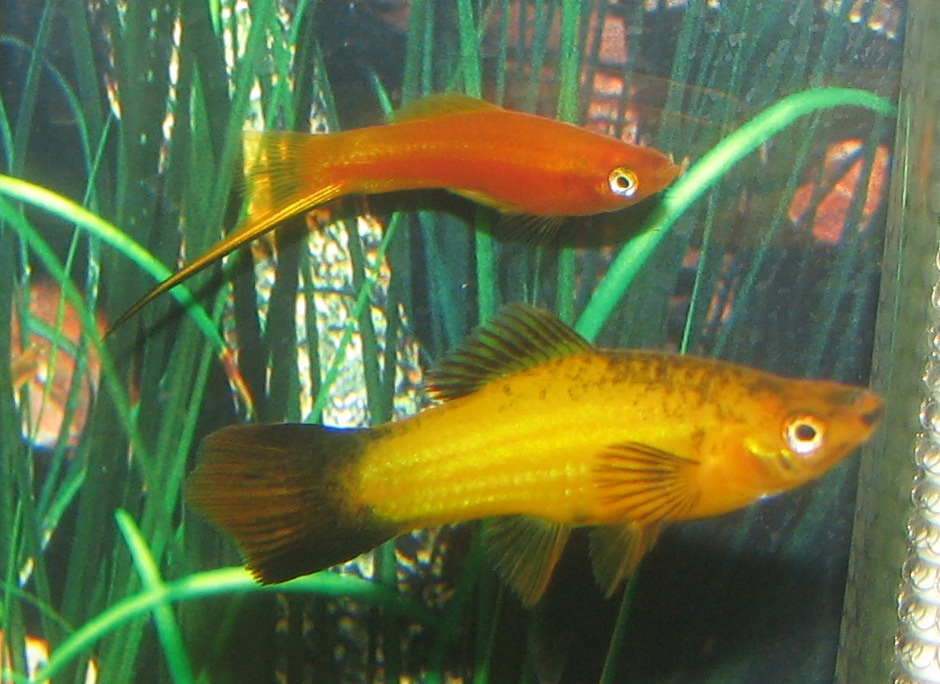
The Swordtail Fish (Xiphophorus hellerii) stands as one of the most recognizable and beloved species in the aquarium trade, distinguished by its vibrant coloration and the characteristic sword-like extension of the male’s caudal fin. This freshwater fish belongs to the family Poeciliidae and originates from the rivers and streams of Central America, where it plays a crucial ecological role as both predator and prey in complex aquatic food webs. The species has achieved remarkable success in captive breeding programs and has established itself as a cornerstone species in the global aquarium industry, contributing significantly to both commercial and educational aspects of fishkeeping.
Beyond its commercial importance, the Swordtail Fish serves as an indicator species in its native habitat, reflecting the health of freshwater ecosystems throughout its range. Its adaptive capabilities and reproductive success have made it both a model organism for genetic research and an unfortunate example of invasive species establishment in non-native waters. The species demonstrates remarkable plasticity in habitat utilization, occupying various ecological niches from fast-flowing mountain streams to slower-moving lowland rivers.
| Feature | Details |
| Common Name | Swordtail Fish |
| Scientific Name | Xiphophorus hellerii |
| Family | Poeciliidae |
| Typical Size | 10-15 cm (4-6 inches), 15-50 grams |
| Habitat | Freshwater rivers and streams |
| Diet | Omnivorous opportunist |
| Distribution | Central America, introduced worldwide |
| Conservation Status | Least Concern |
Taxonomy & Classification
The Swordtail Fish belongs to the order Cyprinodontiformes and represents one of the most thoroughly studied species within the family Poeciliidae. First described by Karl Theodor Heckel in 1848, Xiphophorus hellerii has undergone extensive taxonomic revision as molecular techniques have refined our understanding of poeciliid relationships. The genus Xiphophorus, meaning “sword-bearer” in Greek, encompasses 28 recognized species, with X. hellerii serving as the type species for this diverse clade.
Phylogenetic analyses have revealed that Swordtail Fish share a close evolutionary relationship with platyfish (Xiphophorus maculatus), with evidence suggesting these species diverged approximately 4.5 million years ago. This relationship has proven particularly significant for genetic research, as the two species readily hybridize and produce viable offspring with intermediate characteristics. Modern molecular systematics place the Poeciliidae family within the larger group of killifishes, highlighting convergent evolution in live-bearing reproductive strategies.
The taxonomic classification reflects the species’ position within a complex evolutionary radiation that occurred throughout Central America during the Miocene and Pliocene epochs. Subspecies recognition within X. hellerii remains contentious among ichthyologists, with some authorities recognizing geographical variants based on morphological and genetic differences observed across the species’ natural range.
Physical Description
The Swordtail Fish exhibits pronounced sexual dimorphism, with males displaying the characteristic sword-like extension of the lower caudal fin rays that gives the species its common name. Adult males typically reach lengths of 10-12 centimeters, while females grow larger, often exceeding 15 centimeters in total length. The sword extension can add an additional 3-5 centimeters to the male’s overall length and serves both as a secondary sexual characteristic and a species identification feature.
Wild-type Swordtail Fish display a robust, laterally compressed body form typical of active swimmers in flowing water environments. The natural coloration consists of an olive-green to yellowish-brown base with a distinctive black horizontal stripe running from the eye to the base of the caudal fin. Males often exhibit more intense coloration during breeding periods, with enhanced orange and red pigmentation along the ventral regions and sword extension.
Selective breeding in captivity has produced numerous color varieties, including red, orange, black, and albino forms, as well as fish with modified fin structures such as lyretails and high-fin varieties. The dorsal fin typically contains 11-14 rays, while the anal fin shows sexual dimorphism with males possessing a modified gonopodium for internal fertilization. The species maintains a relatively deep body profile with a compression ratio typically ranging from 2.8 to 3.2 times the body depth.
Scale counts provide reliable identification markers, with 26-30 scales along the lateral line and 8-10 scales between the dorsal fin origin and lateral line. The mouth structure reflects the species’ omnivorous feeding habits, with small, pointed teeth adapted for grasping both plant material and small invertebrates.
Habitat & Distribution
The native range of Swordtail Fish extends from southeastern Mexico through Guatemala, Belize, and Honduras, encompassing both Atlantic and Pacific drainage systems throughout this region. Natural populations inhabit a diverse array of freshwater environments, from fast-flowing mountain streams at elevations exceeding 1,500 meters to slower-moving lowland rivers near sea level. This altitudinal range demonstrates the species’ remarkable physiological adaptability to varying water parameters and flow conditions.
Preferred habitat characteristics include areas with moderate to strong current flow, rocky or gravelly substrates, and abundant aquatic vegetation. Water temperatures in native habitats typically range from 18-28°C, with seasonal variations corresponding to regional precipitation patterns. The species shows particular affinity for areas with overhanging vegetation and submerged root systems that provide both shelter and foraging opportunities.
Human activities have facilitated the global distribution of Swordtail Fish far beyond their native range, with established populations now documented on every continent except Antarctica. Notable introduced populations exist in the southern United States, particularly in Texas and Florida, where they have colonized spring-fed rivers and canals. According to FishBase records, the species has also established populations in Australia, South Africa, and several Mediterranean countries.
The ecological success of introduced populations often correlates with habitat similarity to native conditions, particularly water temperature regimes and flow patterns. In many introduced ranges, Swordtail Fish occupy similar ecological niches to native species, potentially creating competitive interactions that influence local fish community structure.
Diet & Feeding Behavior
Swordtail Fish demonstrate opportunistic omnivorous feeding behavior, adapting their diet based on seasonal availability and habitat conditions. Stomach content analyses from wild populations reveal a diverse diet including aquatic insects, small crustaceans, algae, plant material, and detritus. Larval dipterans, particularly chironomid midges, often constitute the primary invertebrate prey items, while filamentous algae and periphyton provide essential plant-based nutrition.
Feeding activity patterns show distinct diurnal rhythms, with peak foraging occurring during early morning and late afternoon hours. This temporal distribution likely reflects both prey availability patterns and predator avoidance strategies. The species employs various feeding strategies including surface feeding, mid-water foraging, and benthic substrate examination.
Juvenile Swordtail Fish focus heavily on zooplankton and small invertebrates, with dietary composition shifting toward plant material as fish mature. Adult females, particularly gravid individuals, require higher protein intake to support reproductive demands and often exhibit more aggressive foraging behavior during breeding periods.
In introduced habitats, dietary flexibility has contributed significantly to establishment success. Populations in temperate regions show increased reliance on terrestrial insects that fall into the water, while tropical introductions maintain feeding patterns more similar to native populations. The species readily adapts to anthropogenic food sources in urban waterways, including organic waste and aquaculture feed spillage.
Comparative studies of native versus introduced populations reveal that those familiar with diverse aquarium fish species will recognize similar feeding adaptations across various freshwater environments.
Behavior & Adaptations
Swordtail Fish exhibit complex social behaviors that vary significantly between reproductive and non-reproductive periods. During breeding seasons, males establish loose territories around favorable spawning sites, defending these areas through aggressive displays rather than physical confrontation. The sword extension plays a crucial role in male-male interactions, with longer swords correlating to dominance hierarchy position and mating success rates.
Schooling behavior occurs primarily outside breeding periods, with mixed-sex groups forming loose aggregations in areas of high food availability. These schools typically range from 10-30 individuals and demonstrate coordinated movement patterns when threatened by predators. Social hierarchies within schools are less pronounced than territorial breeding systems, with dominance relationships remaining fluid.
The species demonstrates remarkable physiological adaptations to varying environmental conditions. Osmoregulatory capabilities allow survival in waters with significant seasonal salinity fluctuations, particularly in coastal areas where freshwater systems interface with marine environments. Temperature tolerance ranges from 10-35°C, though reproductive activity ceases below 16°C and above 32°C.
Predator avoidance strategies include rapid burst swimming, utilization of complex habitat structures, and coordinated group responses to threat stimuli. The laterally compressed body form provides exceptional maneuverability in vegetated environments, while the species’ jumping ability allows escape from confined spaces during flood events.
Circadian activity patterns show strong correlation with light availability, with most feeding and social interactions occurring during daylight hours. However, introduced populations in areas with artificial lighting often display modified activity patterns that extend into nighttime hours.
Reproduction & Life Cycle
Swordtail Fish employ internal fertilization through a specialized male reproductive structure called a gonopodium, which develops from modified anal fin rays during sexual maturation. Breeding behavior begins with elaborate courtship displays where males present their sword extensions while performing figure-eight swimming patterns around females. Successful copulation results in internal sperm storage within the female’s reproductive tract, allowing for multiple broods from a single mating event.
The species exhibits ovoviviparous reproduction, with females retaining developing embryos internally for approximately 24-30 days depending on water temperature. Gestation periods show inverse correlation with temperature, ranging from 21 days at 28°C to 35 days at 20°C. Brood sizes vary considerably based on female size and age, with young females producing 10-20 offspring while mature females may release 50-100 fry per reproductive cycle.
Parturition typically occurs during early morning hours in areas with dense vegetation or structural complexity that provide immediate shelter for newborn fry. Unlike many fish species, Swordtail Fish provide no parental care, with survival depending entirely on habitat quality and predator abundance. Fry measure approximately 6-8 millimeters at birth and possess sufficient development to begin active feeding within hours of release.
Sexual maturation occurs at 3-4 months of age for males and 4-6 months for females, with the characteristic sword development beginning during the juvenile period. Some males develop alternative reproductive strategies, including “sneaker” males that mature at smaller sizes without developing prominent swords. These alternative phenotypes can successfully reproduce through rapid mating attempts when dominant males are engaged in territorial disputes.
Reproductive success in wild populations correlates strongly with habitat quality and seasonal patterns, with peak breeding activity corresponding to warm, stable water conditions. Understanding these patterns proves valuable for those interested in basic fishing techniques in waters where Swordtail Fish populations exist.
Predators & Threats
Natural predators of Swordtail Fish include a diverse array of aquatic and semi-aquatic species that vary across different habitat types and geographical regions. Large predatory fish such as cichlids, catfish, and centrarchids represent the primary aquatic threats, particularly to juvenile and sub-adult Swordtails. Avian predators including herons, egrets, and kingfishers effectively exploit shallow-water populations, while terrestrial predators such as snakes and small mammals opportunistically capture fish in temporary pools.
The conspicuous sword extension of males creates a paradoxical situation where sexual selection favors increased sword length while natural selection pressures promote shorter appendages that reduce predation risk. Research has demonstrated that males with longer swords experience higher predation rates but achieve greater reproductive success, illustrating the evolutionary tension between sexual and natural selection pressures.
Habitat modification represents the most significant anthropogenic threat to native Swordtail Fish populations. Agricultural development, urbanization, and water extraction have substantially altered stream flow patterns and water quality throughout much of the species’ native range. Pollution from agricultural runoff, particularly pesticides and fertilizers, affects both direct fish health and prey availability.
Climate change poses emerging challenges through altered precipitation patterns and increased frequency of extreme weather events. Drought conditions concentrate fish populations in reduced habitat areas, increasing predation pressure and disease transmission rates. Conversely, intense rainfall events can create flood conditions that wash fish downstream into unsuitable habitats.
Introduced species competitions have become increasingly problematic in many regions where Swordtail Fish have been established outside their native range. Aggressive territorial species may exclude Swordtails from optimal habitats, while similar ecological requirements can create resource competition scenarios that impact population sustainability.
Parasitic infections, particularly by monogenean flatworms and protozoan parasites, can significantly impact wild populations during periods of environmental stress. These parasites often show increased prevalence in degraded habitats where fish immune systems are compromised by poor water quality or nutritional stress.
Conservation Status
The International Union for Conservation of Nature currently classifies Swordtail Fish as Least Concern due to stable population trends throughout most of their native range and successful establishment in numerous introduced locations worldwide. However, this broad classification masks significant regional variations in population status and emerging conservation challenges that warrant careful monitoring.
Native populations in several Mexican river systems have experienced documented declines due to habitat modification and water extraction for agricultural purposes. The endemic populations in the Río Coatzacoalcos system show particular vulnerability due to industrial development and associated water quality degradation. Conservation biologists have identified these isolated populations as priorities for habitat protection and restoration efforts.
The species’ widespread introduction beyond its native range creates complex conservation implications. While global extinction risk remains minimal due to extensive captive populations and successful introduced populations, the ecological impacts of these introductions raise concerns about native biodiversity conservation. Several countries have implemented regulations restricting Swordtail Fish importation and release to prevent further ecological disruption.
Captive breeding programs in the aquarium trade provide an important conservation safety net, maintaining genetic diversity through carefully managed breeding stock. However, decades of selective breeding for ornamental traits have created genetic bottlenecks in some captive populations that may limit their conservation value for wild population supplementation.
Research initiatives focused on population genetics have revealed that some geographically isolated native populations represent distinct evolutionary lineages that may warrant subspecific recognition. These findings suggest that current conservation assessments may underestimate the true biodiversity value of native Swordtail Fish populations.
Habitat restoration projects in Central America increasingly recognize the importance of maintaining connectivity between river systems to support natural population dynamics and genetic exchange. These efforts align with broader watershed conservation strategies that benefit multiple native species while addressing human water security needs.
Human Interaction
The relationship between humans and Swordtail Fish spans over 150 years of aquarium keeping, making them one of the most historically significant species in the ornamental fish trade. Commercial breeding operations worldwide produce millions of individuals annually, with major production centers in Southeast Asia, Eastern Europe, and South America contributing to a global market valued at tens of millions of dollars.
Educational applications of Swordtail Fish extend far beyond simple aquarium keeping, with the species serving as a model organism for genetic research, developmental biology, and evolutionary studies. University and research institution breeding programs maintain specialized genetic lines that have contributed to fundamental discoveries in areas including sex determination mechanisms, cancer research, and pigmentation genetics.
Recreational fishing for Swordtail Fish occurs primarily in introduced populations where they have achieved sufficient size and abundance to attract angling interest. Light tackle fishing methods prove most effective, similar to approaches used for other small freshwater species. Anglers in regions with established populations, particularly those familiar with river fishing techniques, often encounter Swordtails as incidental catches while targeting other species.
The aquaculture industry utilizes Swordtail Fish both as ornamental species and as forage fish for larger predatory species in intensive production systems. Their rapid reproduction rate and hardy nature make them valuable in situations requiring reliable food fish production. Some operations focus specifically on producing feeder fish for the pet trade and public aquarium feeding programs.
Cultural significance varies among different regions and communities. In some Central American communities, native Swordtail Fish populations are considered indicators of ecosystem health and are incorporated into traditional ecological knowledge systems. Children often learn about aquatic ecosystems through Swordtail Fish observation and care, making them important ambassadors for freshwater conservation awareness.
Environmental education programs frequently feature Swordtail Fish due to their hardy nature, interesting behaviors, and relatively simple care requirements. School aquarium programs and youth education initiatives rely heavily on this species to teach fundamental concepts about aquatic ecology, reproduction, and species interactions.
Interesting Facts
The sword-like tail extension that gives this species its name can regenerate if damaged, with complete regrowth typically occurring within 2-3 months under optimal conditions. This regenerative capability extends to other fin structures and represents an important adaptation for surviving predator attacks and environmental hazards in wild populations.
Swordtail Fish demonstrate remarkable sex reversal capabilities under specific environmental conditions. Some females can transform into functional males when population demographics favor increased male representation, developing gonopodiums and sword extensions during this transformation process. This phenomenon, while rare in wild populations, occurs more frequently in captive environments with specific sex ratio imbalances.
The species exhibits unusual genetic inheritance patterns for sex determination, with some populations showing male-biased sex ratios due to Y-chromosome drive mechanisms. This genetic peculiarity has made Swordtail Fish valuable research subjects for understanding the evolution of sex determination systems and chromosomal inheritance patterns.
Temperature-dependent behavioral modifications include increased aggression levels at higher temperatures and altered schooling patterns during seasonal temperature fluctuations. Wild populations show synchronized breeding activities that correspond to regional rainy seasons, with entire populations exhibiting coordinated reproductive behavior within narrow temporal windows.
Hybridization between Swordtail Fish and closely related Xiphophorus species produces offspring with unique characteristics that have contributed to numerous aquarium varieties. Some hybrid crosses result in individuals with exceptional sword development, enhanced coloration, or modified body forms that would be impossible to achieve within a single species breeding program.
Swordtail Fish possess excellent color vision capabilities that extend into ultraviolet wavelengths, allowing them to detect predators, prey, and potential mates through visual cues invisible to human observers. This enhanced visual system contributes to their success in complex aquatic environments where visual communication plays crucial roles in survival and reproduction.
The species demonstrates learned behavior transmission, with juveniles adopting feeding strategies and predator avoidance techniques through observation of adult individuals. This social learning capability contributes to rapid adaptation when populations are introduced to novel environments with different ecological challenges.
Frequently Asked Questions
How can you distinguish male and female Swordtail Fish?
Male Swordtail Fish possess the characteristic sword-like extension of the lower caudal fin rays, which females completely lack. Additionally, males develop a modified anal fin called a gonopodium used for reproduction, while females retain the normal fan-shaped anal fin structure. Males are typically smaller than females and often display more intense coloration, particularly during breeding periods.
What water conditions do Swordtail Fish require in their natural habitat?
Wild Swordtail Fish inhabit freshwater systems with temperatures ranging from 18-28°C and pH levels between 7.0-8.5. They prefer moderate to strong current flow with dissolved oxygen levels above 6 mg/L. Natural habitats typically feature rocky or gravelly substrates with abundant aquatic vegetation and structural complexity for shelter and foraging opportunities.
How do introduced Swordtail Fish populations impact native ecosystems?
Introduced Swordtail Fish can create competitive pressure on native species with similar ecological requirements, particularly small cyprinids and other surface-feeding fish. They may also serve as novel prey items for native predators while potentially disrupting established food web dynamics. However, ecological impacts vary significantly depending on recipient ecosystem characteristics and native species assemblages.
What role do Swordtail Fish play in scientific research?
Swordtail Fish serve as important model organisms for studying genetics, evolutionary biology, and developmental processes. Their well-characterized genome, ease of laboratory maintenance, and interesting reproductive biology make them valuable for research into sex determination, cancer biology, and behavioral evolution. Many fundamental discoveries in fish biology have utilized Swordtail Fish as research subjects.
Conclusion
The Swordtail Fish represents a remarkable example of evolutionary success and adaptability, demonstrating how freshwater species can achieve global distribution through both natural processes and human activities. Their ecological significance extends from their native Central American watersheds to introduced populations worldwide, while their scientific and cultural importance continues to grow through ongoing research and educational applications. As both a conservation priority in native habitats and a model species for biological research, Swordtail Fish exemplify the complex relationships between biodiversity preservation, scientific advancement, and sustainable human interactions with aquatic ecosystems. Understanding these multifaceted roles proves essential for ensuring the species’ continued contribution to both ecological stability and human knowledge advancement in the decades ahead.
Share The Article:
More Fish Species:
-
Whale Shark
The whale shark (*Rhincodon typus*) stands as the ocean’s largest fish species, representing one of nature’s most remarkable gentle…
-
Celestial Eye Goldfish
The Celestial Eye Goldfish represents one of the most distinctive varieties within ornamental aquaculture, known scientifically as Carassius auratus….
-
Lemon Tetra
The Lemon Tetra (*Hyphessobrycon pulchripinnis*) stands as one of South America’s most vibrant freshwater fish species, distinguished by its…
-
Thresher Shark
The Thresher Shark represents one of the ocean’s most distinctive and captivating apex predators, renowned for its extraordinarily elongated…
-
Double Tail Betta
The Double Tail Betta, scientifically known as Betta splendens, represents one of the most distinctive and captivating variants within…
-
Pearl Gourami
The Pearl Gourami stands as one of the most recognizable and ecologically significant members of the labyrinth fish family,…
Discover
-
Fishing with Kids: How to Make It Fun and Educational
I’ll never forget the look on my son Tommy’s face when he caught his first bluegill. He was six,…
-
Beluga Fishing: Techniques That Actually Work (Not Theory)
When it comes to beluga fishing, there’s a world of difference between what you read in theory and what…
-
Caribbean Inshore Fishing: Bonefish and Permit Tactics
There’s something almost magical about stalking the shallow flats of the Caribbean. I still remember my first bonefish –…
-
Fishing Tips for Beginners: An Expert Guide to Your First Successful Catch
Getting started with fishing can feel overwhelming. Trust me, I’ve been there – staring at walls of equipment, trying…
-
Caribbean Reef Shark
The Caribbean Reef Shark (*Carcharhinus perezi*) stands as one of the most recognizable and ecologically significant predators patrolling the…
-
How to Set Up a Fishing Pole For Beginners
After three decades of teaching friends and family how to fish, I’ve learned that setting up a fishing pole…
Discover
-
Cardinal Tetra
The Cardinal Tetra (Paracheirodon axelrodi) stands as one of the most vibrant and sought-after freshwater aquarium fish in the…
-
Corydoras Catfish
Corydoras catfish represent one of the most diverse and ecologically significant groups of freshwater bottom-dwelling fish in South American…
-
King Mackerel Fishing: Top Strategies for Landing Smokers
Some days on the water just stick with you. Few things compare to that first time a king mackerel…
-
Best Fishing Lures for Walleye: Pro Secrets You Won’t Believe
Let me tell you something about walleye fishing that most anglers get completely wrong. After 30+ years of chasing…
-
Bigeye Thresher Shark
The Bigeye Thresher Shark represents one of the ocean’s most extraordinary predators, distinguished by its dramatically elongated tail fin…
-
Types of Ocean Fishing: Complete Guide for Beginners
There’s something magical about standing at the edge of the vast ocean with a fishing rod in hand. I’ve…

